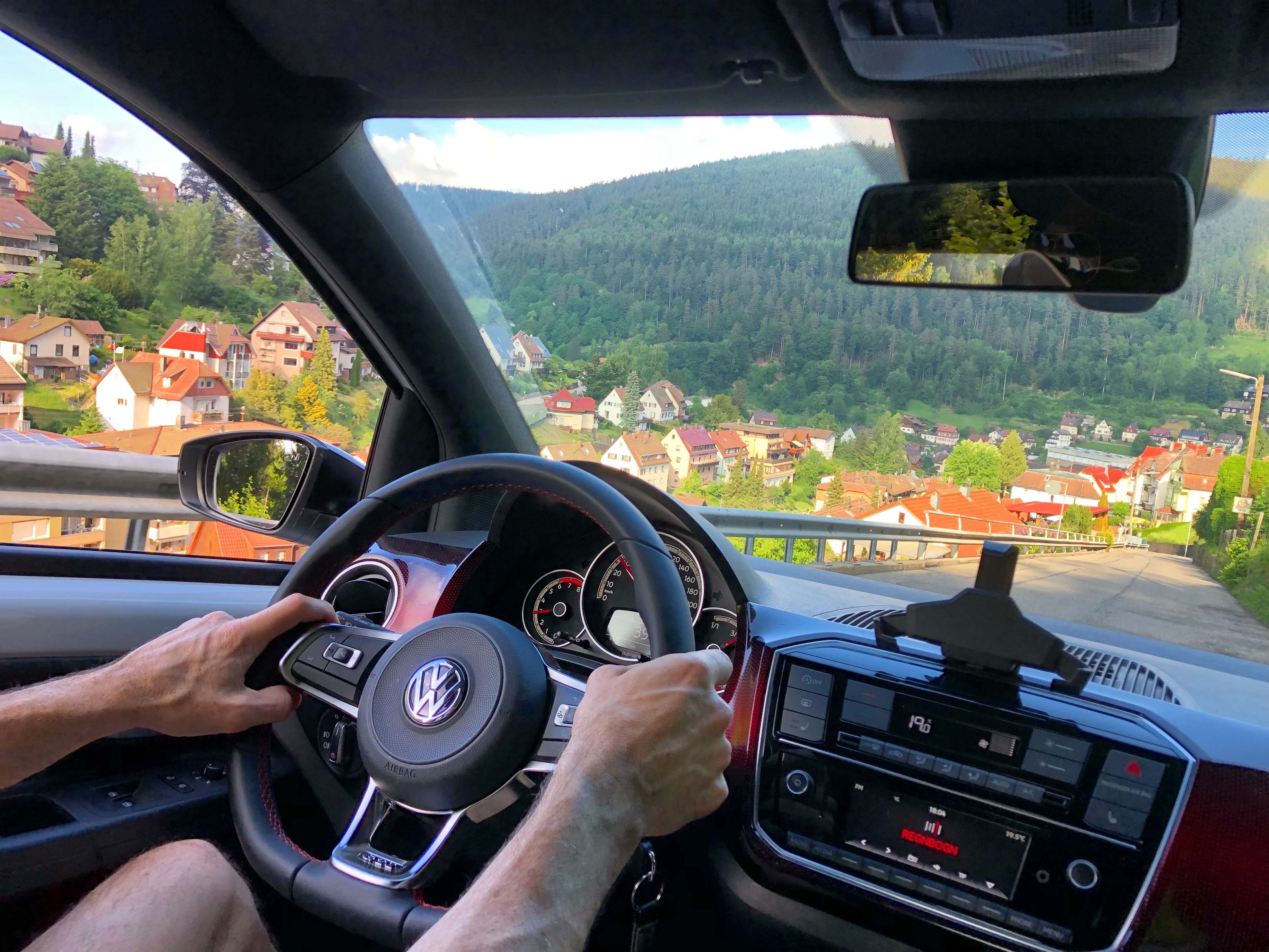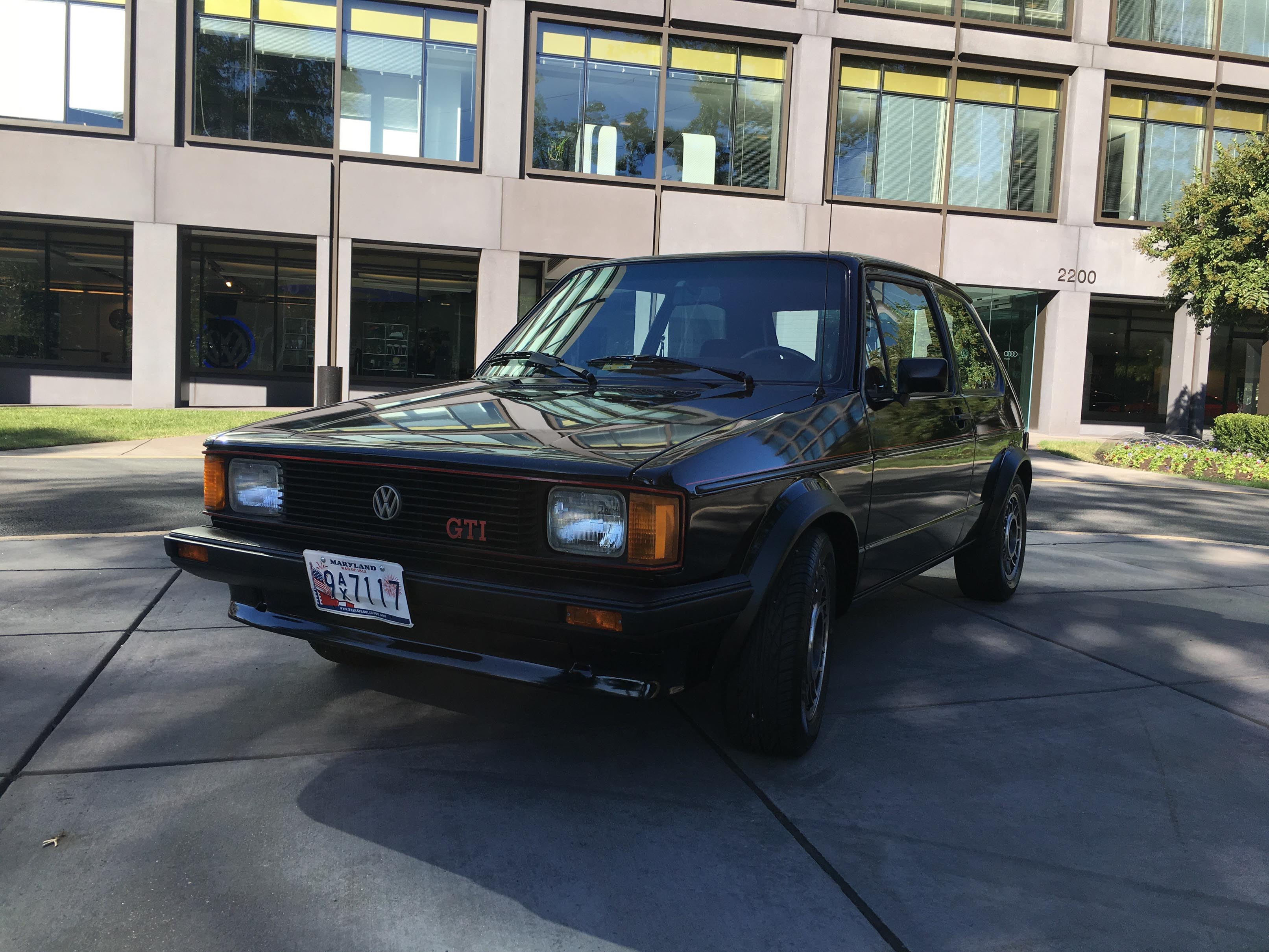The Volkwagen Up! GTI is a reborn Mark 1 Rabbit GTI
When the first generation VW Rabbit GTI was introduced into the American market for 1983, it represented a new category of vehicle: the “hot hatch.” Born of the fuel crises that killed the muscular guzzlers of the recent past, but meant to satisfy an unyielding desire for affordable fun, it followed a recipe familiar to hot-rodders since the dawn of the automobile: take a small vehicle and add more fast. The first generation, three-door Rabbit GTI—based on the German Mark 1 Golf, but built in and renamed for the US—was foundational, establishing the hot hatch market and eventually inviting competitors like the Dodge Omni GLH, Honda Civic Si, and Toyota Corolla FX16.
The upgrades to the quotidian, Pennsylvania-produced Rabbit, were significant. Increased displacement, higher compression, and a freer-flowing exhaust yielded 21% more power, up from 74 to 90 horsepower. A heavy-duty clutch and close-ratio 5-speed manual were swapped in to speed throws, the shift-knob topped with a multi-beveled “golf ball” shifter, a play on the vehicle’s global name that resonated only for insiders here. Springs were stiffened, struts were upgraded, and anti-roll bars were added front and rear to reduce rock and roll. Fenders were flared with plastic carbuncles, allowing “meatier” 185-section Pirelli rubber on 14-inch snowflake alloys, backed by vented (instead of solid) discs up front. The exterior was treated to some subtle red badges and grille highlights, the interior to additional gauges, sportier seats and steering wheel, and special Clark Plaid upholstery. At 2200 lbs, the weight exceeded the global Golf’s by a hundred kilos, but still allowed a mid-ten second 0-60 mph run, quicker than a contemporary BMW 320i, along with road-holding on par with a contemporary Porsche 911. All for $8500 (about $21,500 in 2018 money.)



Back in the mid-80s, when I was a scholarship student in a private Detroit-area high school, I drove a ratty 1973 BMW 2002. My old car (also, I) was an outlier. But the Motor City’s potent automotive culture, and the relative wealth of my cohorts, meant that interesting metal was not uncommon. We Euro-car oddballs sometimes traded keys for coursing around campus. I drove new and vintage Saabs, Peugeots, Alfa Romeos, Porsches, Volvos, Mercedes, Maseratis, and even a Lamborghini Countach. But the cars that reminded me most of my Bimmer were my friend Matthew and Joel’s Rabbits. a basket-handle Cabriolet and a GTI, respectively, both with the same revvy, throaty, slot-shifting powertrain, and disconcerting tendency to lift an inside rear wheel in corners, a trick my teenage self was uncertain how to manage in a front-drive hatch. Don’t tell Matt or Joel, but things occasionally got a bit, uh, imprecise.
Having imprinted automotively in the Malaise Era, I now own a 1970s Saab, Fiat, and Porsche, and a 1990 Land Rover, and I’m often looking for other opportunities to re-experience the vehicles of my youth. These often occur in unlikely ways. Like my recent trip to Germany, where Volkswagen offered an Up! GTI as a road trip companion through the Black Forest.
The Up! is VW’s smallest car, and the third vehicle in their lineup, after the Golf and Polo, to be receive the GTI nameplate. But this is essentially a reincarnation of the first-gen GTI. It’s a three-door hatch that weighs a few hundred pounds over a ton and hovers around twelve feet in length. It sports an up-powered motor, upgraded suspension, vented front discs, short-throw manual transmission, and larger tires and wheels—a scrawny 195-section that’s just a fraction of an inch wider than the original. But the visual details most evince the legacy. Same red line around the grille, same red GTI badging, wheel design inspired by the Rabbit’s flake-y Avuses (though now 17 inches). And while the Up! GTI lacks a golfball shifter, the sporty seats are faithfully covered in Clark Plaid.

Also, like the Ur-GTI, it is an fiendish blast to drive. Slightly less weight, improved technology, and more power (113 hp from a direct injected, turbocharged, 1.0-liter three-cylinder) makes it quicker off the line than a Mark 1, capable of an 8.5 second 0-60 mph sprint. But the willing, revvy, hard-charging demeanor remains, backed up by a similarly throaty exhaust note. I tossed it through the mountains. I crushed the streamside valleys. I was even able to do something I could never accomplish in the original GTI: Take it on a top speed run on the Autobahn, hitting an indicated 206 kp/h (128 mph,) or about twice what I saw on those high school back roads.
For those of you desiring a more faithful recreation of your original GTI fantasies, now may be the right time to indulge in a classic Mark 1. (And besides, under current legislation you can’t import the Up! GTI stateside until 2043.) Our valuation specialists at Hagerty show that the average value for the growing Rabbit GTI population in our database hovers around $7500, with Condition #5 beaters going for under a grand and Condition #1 time capsules barely hitting $20,000. “The perspective is that these are currently under the radar, which means now is the time to buy them,” says Hagerty spokesperson Jonathan Klinger. “They are great fun to drive and mechanically strong as long as they aren’t plagued with deferred maintenance.” As with other 80s icons, we expect them to appreciate in the coming years.


Buy one is just what former automotive writer Justin Hyde, did after taking a PR job with VW. Justin purchased a black, 1984 GTI last year for $5000, and has put a few hundred dollars into it, mainly to bring the interior back to stock. He uses his car mainly for weekend blasts, and hopes to implement it as a manual-transmission driving aid when his kids are of age. But, mainly, he relishes its approachability. “You don’t have to break a speed limit to enjoy tossing it around town, it’s not so precious that customizing it offends the car gods, and parts aren’t completely unobtainable,” says Hyde. He also finds that it scratches the nostalgia itch, and not just for him. “People always walk up and start talking about it—usually former GTI owners or people who wished they had bought one when they had the chance.”







